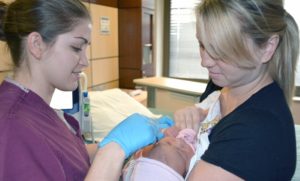26TH INTERNATIONAL CONFERENCE ON HEALTH PROMOTING HOSPITALS AND HEALTH SERVICES
BOLOGNA, ITALY | JUNE 6-8, 2018
SCOPE & PURPOSE
The title and focus of the conference “Health promotion strategies to achieve reorientation of health services: evidence-based policies and practices».
Good governance for health promoting health services
There is no effective and sustainable change in organizations without adequate governance. Governance includes more than decisions on which services are covered, it also is about on how services are funded, managed, and delivered. Governance in this context addresses culture, structures and processes to enable health services to be more health promoting. So, we need to look on perspectives of global governance and how they support and interact with national and regional strategies. Which governance tools/policies have been experienced by health services to be helpful for implementing health promotion? What was the contribution of HPH to good governance of health services so far and how can HPH better contribute to further improvement?
The role of HPH in developing people-centered health care systems by coordinated and integrated care services
Reorienting health services means developing better integrated and stronger people centered health services as an answer to the “dominant fragmented system designed around diseases and health institutions”. For this to happen, WHO demands “… putting the comprehensive needs of people and communities at the center of health systems, and empowering people to have a more active role in their own health”. The goal is to “refocus on the total needs of the individual as a whole person”. Presentations will reflect on how concepts and experiences of health promoting health services have contributed to achieving more people-centered health systems and how the New Haven Recommendations on partnering with patients, families and citizens from 2016 can contribute to future developments. How are these concepts supported by experience from everyday practice in the field in various kinds of health services and considering diverse user and patient groups?
Incorporating health promotion into disease management programs for NCDs
The enormous burden of non-communicable diseases even brought this health topic on the agenda of the UN General Assembly in 2011. There, it was acknowledged that the global burden and threat of NCDs constitutes one of the major challenges in the twenty-first century. While management of NCDs is understood as the detection, screening and treatment of NCDs, health promotion, also addresses the determinants of health – both, personal behaviors and situational living conditions – and thus the underlying risk factors of NCDs. WHO recently published the “Montevideo roadmap 2018-2030 on NCDs as a sustainable development priority”, which supports this priority with strong reference to health literacy. The health promotion perspective widens the scope of interventions and offers a variety of activities which can be undertaken. Those interventions and activities typically counteract more than one health problem, e.g. cardiovascular conditions, obesity, mental health disorders. What are successful examples that bring disease management and health promotion together?
Co-producing better health gain through user participation and community involvement
Individuals are the experts on their own health, thus reorientation of health services will not work without good participation of people who have to be enabled to contribute to creating their health and co-producing treatment of their diseases. Therefore, the question is how to best provide the opportunities, skills and resources people need to be articulate and empowered users of health services? Which structures, practices and professional skills are needed for accompanying participation processes and community involvement? How do patients and their families want to be involved in health care decisions, and what specific role can self-help groups and the self-help-friendly hospital play? How can it be ensured that underserved and marginalized groups become involved? And, last but not least, how can risks of under- and overuse of the health system be managed?
Strengthening health promotion and disease prevention in primary health services
40 years have passed since the Alma Ata declaration on strengthening primary health care has been agreed, however, too little happened so far. Nevertheless, there is evidence that those health care services are efficient and effective that prioritize primary and community care services (PHC) and the co-production of health. WHO states “A strong primary health care platform with integrated community engagement within the health system is the backbone of universal health coverage.” Which obstacles have to be overcome and which incentives, competencies, forms of delivery and types of organization can support the strengthening of health promotion in primary health services? Which experiences from HPH can be transferred to primary health care, but also, which new and supplementary approaches have to be developed and applied?
DOWNLOAD ABSTRACTBOOK
